НАШ БЛОГ
SUPPORT IN ISSUING THE FIRST BANKNOTES AND CONSTRUCTION OF THE FIRST INDUSTRIAL RAILWAYS
REPUBLIC OF SERBIA AND THE KINGDOM OF BELGIUM
Although it occupies a relatively small area, Belgium is world-famous for the architecture of its cities, delicacies such as waffles and chocolate and the fact that Brussels is today the European administrative centre and the seat of the European Union. Serbia’s bilateral relations with this country date back to the 19th century and have been constantly improving ever since.

European historical battleground
In diverse historical periods, mighty European states fought over the territory of today`s Belgium. In the ancient times, it was settled by the tribes of the Gauls and the Celts. Roman rule lasted until the 5th century, when it was integrated into the Kingdom of the Franks. In 870, major part of Belgium was joined to Germany. After the Hundred Years` War between England and France (1337—1453), the English ally Burgundy conquered Flanders, which was the beginning of the so-called Burgundian Period. Since 1477, Belgium was under the rule of Habsburg dynasty. After the War of the Spanish Succession, in 1714 it became part of Austria. In the Napoleon time, at the end of the 18th century, it was a part of France. After his defeat in Waterloo on 18. June 1815., only 12 km away from the Brussels, European powers joined Belgium to its northern neighbour – Holland.
Waterloo is a popular tourist attraction at which the military equipment and the monument of victory `Butte du Lion` can be seen today
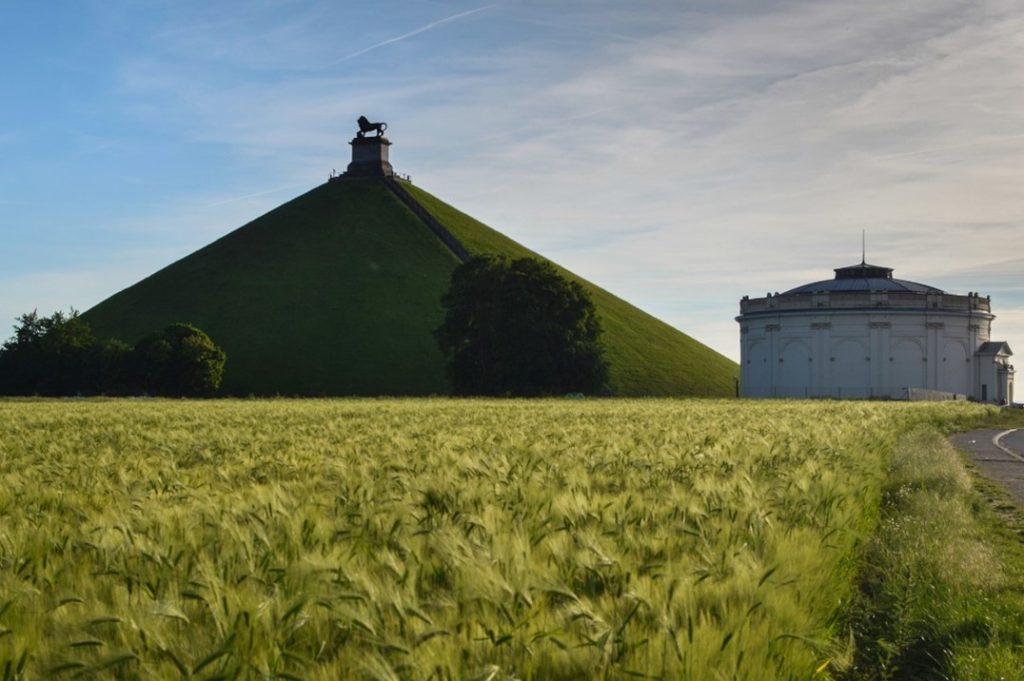
The initial phase of gaining independence from Holland started by the riot after the performance of patriotic opera of Daniel Auber, which woke up the national spirit. Temporary government of Belgium declared independence on 4. October 1830.. However, it was only on 19. April 1839., when the Treaty of London was signed, that the European powers, including Holland, recognized its independency.
Episode of the Belgium revolution of 1830, Gustaf Wappers (1834)
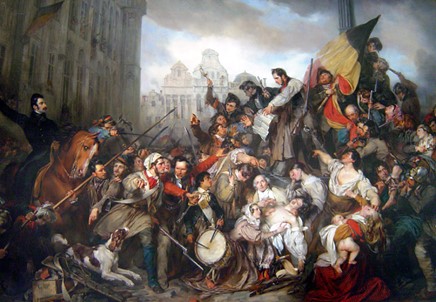
During the First and the Second World War this area was the arena of many battles which destructed the country. Nevertheless, it soon recovered due to industrial revolution and the colonies in Africa.
Modern Belgium is one of the founders of the United Nations, the European Union and the NATO. It hosts the seats of numerous international organizations, including the EU and the NATO.
Bilateral relations between Belgium and Serbia
Official diplomatic relations between the two countries were established in 1886, during the Kingdom of Serbia. The first consul general of Belgium in charge of Serbia was Gilles Mate. He was succeeded in 1879 by the Belgian historian Émile de Borchgrave, who dedicated some of his works to medieval Serbia. Borhgrave was in friendly contact with Serbian historian Stojan Novakovic.
Émile de Borchgrave, Consul General of Belgium and Charge d’Affaires in the Principality of Serbia
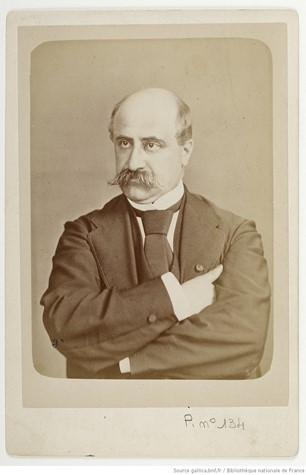
Serbia was the focus of his study La Serbie administrative, économique et commerciale (1883), as well as of his most important historical work L’empereur Étienne Douchan et la Péninsule balkanique au XIVme siècle. The latter was translated in Serbian as Srpski car Stevan Dušan i Balkansko Poluostrvo u XIV veku od Emila de Borhgrav člana kr. belgijske Akademije. Borhgrave was a member of Serbian Scentific Society and, starting from 1892, member of Serbian Royal Academy.
It is interesting to note that the beginnings of the Serbian history of issuing banknotes were under the influence of Belgium. Namely, the Committee of the International Monetary Convention (concluded in 1865 by France, Belgium, Italy and Switzerland, and whose principles were accepted by Serbia) proposed to our government “to invite an expert foreigner, who would organize the National Bank”, which the government accepted. Belgium sent Charles Boschmans, from its National Bank, and he assisted in providing the Serbian National Bank with the models of Belgian banknotes.
Thus, the first Serbian note of 100 dinars in gold was made, following the Belgian model of 100 francs. It was in use on 2. July 1884., on the same date when the issuing bank was established – the Privileged National Bank of the Kingdom of Serbia.
The Belgian liberal constitution was also a model of the democratic constitution adopted after the People’s Radical Party came to power under the leadership of Sava Grujic and Nikola Pasic.
Until the end of the First World War, Serbian interests in Belgium were presented at the ambassador level by office in Paris. The first diplomatic representative as ambassador at the time of Socialist federal Republic of Yugoslavia was Mire Anastasov, from 1945 to 1948.
Diplomatic visits marked the period after the Second World War. In April 2018, the Prime Minister of the Kingdom of Belgium, Charles Michel, visited Serbia, emphasizing on that occasion that the Western Balkans should remain among the priorities of Brussels.
Today, the Mission of the Republic of Serbia to the European Union and the Mission of the Republic of Serbia to NATO are in Brussels.
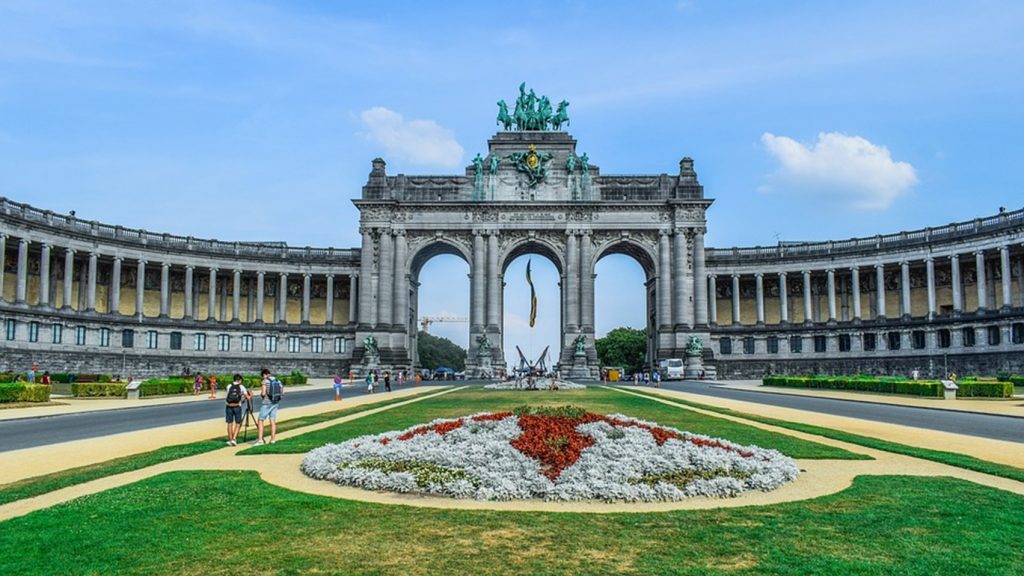
Economic cooperation
The beginnings of economic cooperation can be traced back to the middle of the 19th century, when the first industrial railway in Serbia was built in Negotin region, supported by a Belgian concession. According to historical sources, the Belgian railway, in addition to being the first and the only railway in the Timok Valley, also brought significant novelties into the lives and habits of the people of this region. The trade surged up, and for the first time the technological achievements of that time were introduced.
Belgium stimulates and supports Serbia as a destination for investments. Today, approximately 60 companies with Belgian capital operate in Serbia. The largest investment was made in 2012 with the arrival of the company AholdDelhaize, which employs more than 11,000 workers throughout Serbia. Other significant investors include Carmeuse Jelen Do – limestone, Crops – frozen fruit, Blockx – industrial bags, Elicio – Alibunar wind farm, Puratos – bakery products, Metech – finished metal products in Smederevo, and many other.
In 2017, the value of trade amounted to 542.26 milllion euros (exports 170.72 million euros, and imports 371.54 million euros).
Chocolate and football as national symbols
Belgian chocolate is one of the most recognizable products of this country, enjoyed all around the world. Its special taste comes from the advanced manufacturing techniques. The texture varies from very solid to highly liquid used for chocolate fountains. the whole streets of Belgium cities are crowded with shops and workshops, in most of which tourists can attend courses in basics of chocolate production and create their own `chocolate` works of art.
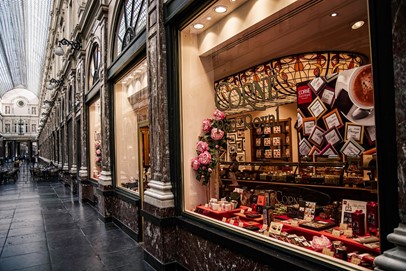
Another kind of global excitement spreads from Belgian football. Fans of this sport eagerly follow the matches of Ghent, Antwerp, and Bruges.
Belgium is the country in which Mile Svilar, goalkeeper and son of the former Yugoslavia national team player Ratko Svilar, was born and started his career. On 18. October 2017., he broke the record previously held by famous Iker Casillas, when he played in the Champions League as the youngest goalkeeper ever.

Mile Svilar, izvor: Instagram







 2018
2018